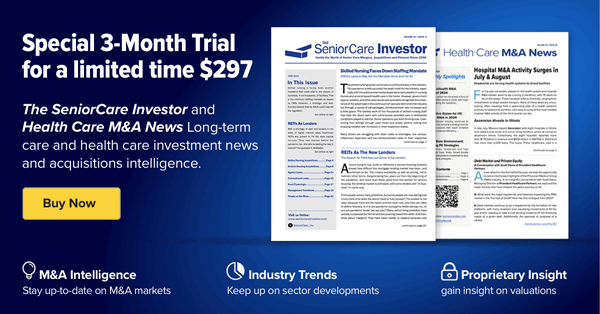The editorial team at Irving Levin Associates attended the keynote panel at the iiBig 13th Annual Investment and M&A Opportunities in Healthcare Virtual Conference aptly titled “State of the Healthcare M&A Industry.” It was led by Nick Donkar, Head Deals Leader – Healthcare, PricewaterhouseCoopers, and featured John W. Jones, Jr., Partner, Troutman Pepper LLP, Burk Lindsey, Managing Director, Raymond James, Michael Ory, Managing Director, Brentwood Capital Advisors and Neil Pickett, VP and Deputy Chief of Staff Indiana University Health.
The panel managed to paint an in-depth portrait of the healthcare M&A market and the forces driving such high growth this year, including the increased level of activity coming from private equity firms. In terms of the “why,” there was a general consensus of the forces creating a surge in deal activity: demographic drivers, a fear of a capital gains tax pushing sellers, and lots of dry powder at the disposal of PE firms.
“Investors figured how to get their arms around the impact of Covid-19,” Mr. Burk added.
We found a lot of value in the discussion around the role of strategic buyers in the market, which can be overlooked by the activity of PE firms. Mr. Pickett, for instance, gave this perspective: “Provider systems are looking at growth opportunities. They’re searching for where they can get more patients or get a bigger share of the wallet, or the healthcare spending. They’re also looking at geographic opportunities.”
These growth initiatives, as Mr. Pickett explained, are partly fueled by a provider wanting enough leverage and size to effectively negotiate with healthcare payers. He called it “bit of an arms race,” a good phrase for how the healthcare M&A market feels right now.
However, Mr. Pickett also warned of a tailwind. “The explosion of labor costs in healthcare is going to be a real big deal. A transition to value-based care might be the only way to cut costs.”
Value-based care was an underlying theme of nearly all the panelists’ points as one of the most important segments in the market. “PE buyers are leaning into innovative healthcare services models. Value-based reimbursements are critical. PE most frequently looking out several years, and they think that’s where the market is going to be,” said Mr. Ory.
Mr. Donkar closed out the discussion with a question about the future: in 18 months, what does the market look like? Overall, the panel agreed that the level of activity we’re seeing in 2021 might be hard to sustain, but that doesn’t mean there will be a huge collapse. “I don’t think it will end completely, but it depends on if money is still available, interest rates, the state of the economy, dry powder and so on,” Mr. Pickett said.
Mr. Jones bounced off of that. “I see this going still, but it depends if regulators get involved.”
If you missed this year’s conference, or prefer an in-person setting, you’re in luck. The 2022 iiBig in-person conferences will be held in mid to late-April 2022 – Chicago (dates and venue TBA) and September 14-15, 2022 in Nashville at the Loews Vanderbilt Hotel.


